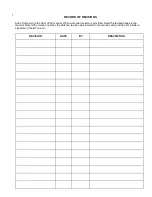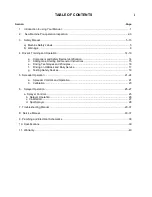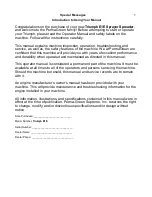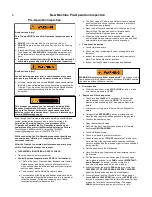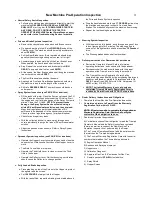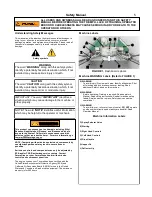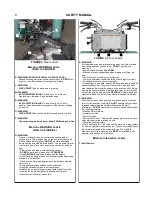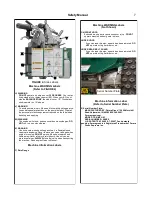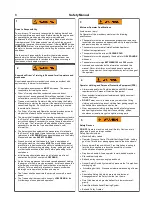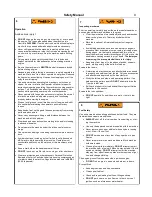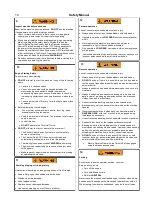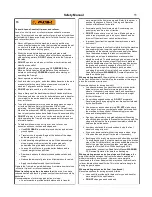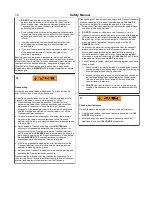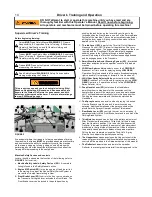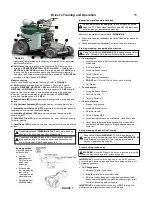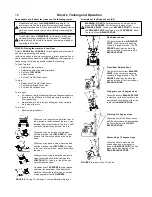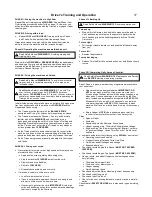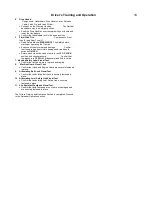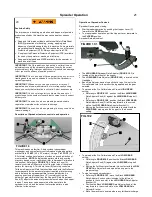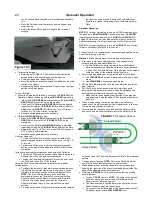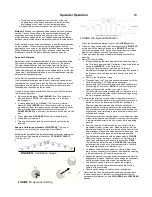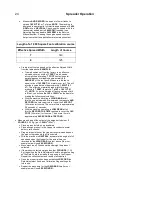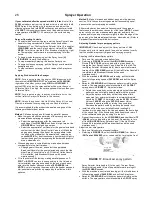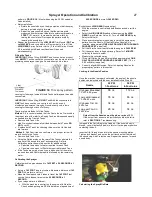
Safety Manual
DO NOT
make sharp turns as you may lose your
balance and be thrown off the machine or loose control.
When making turns, slow down and make gradual turns.
The machine also has a tendency to rollover when
performing this maneuver.
Avoid making downhill turns as the machine will accelerate
through the turn making it more difficult for you to keep your
balance and control over the machine so as to prevent
rollover.
Avoid any obstacles that could suddenly pitch the front
uphill wheel upwards causing a rollover towards the
downhill side.
If you ever loose control while driving across a slope let go
of the handles and jump off to the uphill side of the
machine, if necessary.
Backing up across the grade is a maneuver which in should be
avoided. To avoid backing up; stop the machine, apply the brakes,
step off the Driver’s platform, drop the handlebars, steer the front of
the machine in the desired direction, and gradually engage the
Throttle/Clutch. When backing up is unavoidable, use caution.
Read Safety Manual
WARNING 13
, Reverse Operation, for details
on backing up.
Transporting
Driving up and down ramps is hazardous. The risks include tip-
over, rollover, loss-of-control, and back-over.
Use extreme caution when driving the Triumph onto and off of a
Transport, (such as a vehicle, carrying rack, or trailer).
When loading and unloading, park the Transport on level
pavement well away from puddles, obstacles, and curbs that
may cause the operator to loose his footing or become
entrapped. Allow adequate room for the ramps to be deployed
and the machine and operator to come straight on or off the
Transport platform and ramps.
To prevent a ramp from slipping out from under the machine,
make sure the ramp is securely fastened to the Transport
platform and the ramp and machine wheels are properly aligned
with each other.
Never unload a Triumph by shifting it into
NEUTRAL
and
allowing it to freewheel backwards down a ramp. Rather, the
driver must start the Triumph while on the Transport platform,
shift the engine into
REVERSE
, and inch the machine down the
ramp under power using the brakes as necessary. Read Safety
Manual
WARNING 13
, Reverse Operation, for required
precautions while operating the Triumph in reverse.
If there is not adequate standing room for the operator on the
Transport platform, the machine should be started while the
operator is standing on the ground.
If an enclosed Transport is used, use extra caution starting and
operating the Triumph inside the enclosure.
Transporting the machine over the road can be hazardous. The
risks include but not limited to traffic accidents, failure of Transport
system, and ejection of the machine from the Transport.
16
12
Check wheel fasteners
If wheel fasteners are not tight, a serious accident may occur.
Check wheel fastener tightness frequently during the first
100
HOURS
of operation.
After loosening any wheel fasteners, frequently check their
tightness for the next
100 HOURS
of operation.
17
Transporting the Triumph requires a heavy duty Transport capable
of safely carrying a fully loaded Triumph weighing
700 Lbs
(318
Kg) plus the weight of all materials carried on the transport.
Follow other Transport manufacturer’s precautions and always
use all safety devices provided.
DO NOT
overload or unbalance the Transport or hitch.
Use only heavy duty ramps with a minimum width of
8.5 Inches
(216 mm) and an anti-slip surface capable of supporting
1000
Lbs
(455 Kg) or the combined weight of the machine and
driver whichever is greater. The ramp angle must be
15
DEGREES
or less.
To prevent the machine from being thrown from the transport,
always secure the machine to the Transport’s platform. Use
securing devices provided by the manufacturer or securing
devices each securing device or all securing devices together
must have a minimum load rating of
1,400 Lbs
(636 Kg). Elastic
straps and similar devices are
NOT
to be used.
Check Transport, ramps, hitch, and securing devices each time
they are used.
Check carefully for cracked welds or cracked parts, loose or
missing hardware, excessive wear or damage, or missing or
nonworking safety and securing devices.
When a carrying rack is used, check for damage caused by
the rear edge dragging or bottoming out on the pavement.
This can result in structural failure of the rack, hitch and
vehicle frame or hardware.
DO NOT
use the Transport if it is not in good working
condition. Make necessary repairs or replacements before
using.

